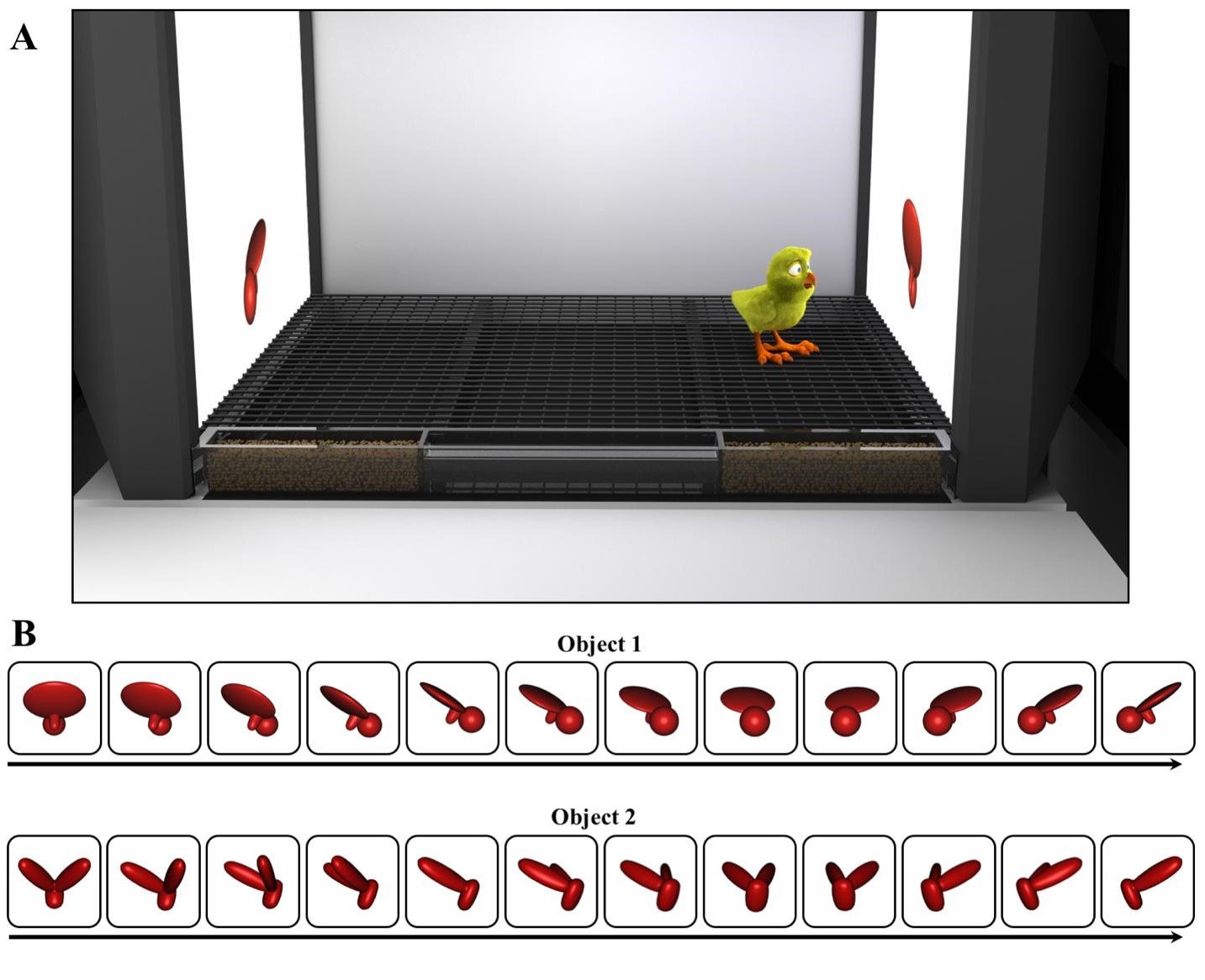Justin N. Wood
To perceive the world successfully, newborns need to be exposed to certain types of visual inputs. The development of object recognition, for example, requires visual experience with slowly moving objects. To date, however, it is unknown whether newborns actively seek out the best visual inputs for developing object recognition. To address this issue, I used an automated controlled-rearing method to examine whether visually naïve animals (newborn chicks) seek out slowly moving objects. Despite receiving equal exposure to slowly and quickly rotating objects, the majority of the chicks developed a preference for slowly rotating objects. This preference was robust, producing large effect sizes across objects, experiments, and successive test days. These results indicate that newborn brains rapidly develop mechanisms aimed at orienting young animals toward optimal visual experiences, thus facilitating the development of object recognition. This study also demonstrates that automation can be a valuable tool for studying the origins and development of visual preferences.
(A) Newborn chicks were raised in controlled-rearing chambers that contained a virtual object on each side of the chamber. The objects were identical, but rotated at different speeds. One object rotated once every 15s (slowly moving object), whereas the other object rotated once per second (quickly moving object). If newborn chicks have a preference for slowly moving objects, then the chicks should spend more time in proximity to the slowly moving object than the quickly moving object. (B) The virtual objects. Half of the chicks were raised with Object 1 and half of the chicks were raised with Object 2.
Experiment 1 results. (A) Group performance. The blue bar shows the preference score for all of the chicks and the orange bars show the preference scores for the chicks reared with each of the two objects. The chicks had a strong preference for the slowly moving object. (B) Individual subject performance. The bars show the preference scores for each chick (ordered by the strength of the preference). The majority of the chicks had a statistically significant preference for the slowly moving object. (C) Change in preference scores across the experiment. Despite receiving equal exposure to the slowly and quickly moving objects, the chicks developed a preference for the slowly moving object. (D) Change in preference scores for each subject. Each line shows the preference scores for one chick across the five days of the experiment. By the end of the experiment, all of the chicks had developed a preference for the slowly moving object. Asterisks denote statistical significance: *P < 0.05; **P < 0.01; ***P < 0.001 (two-tailed one-sample t-tests). Error bars indicate standard error.
Newborn chicks were raised in controlled-rearing chambers that contained a virtual object on each side of the chamber. The objects were identical, but rotated at different speeds. One object rotated once every 15s (slowly moving object), whereas the other object rotated once per second (quickly moving object). The videos show the two objects tested in this experiment.

